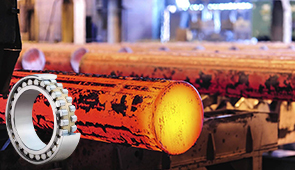What is life of bearing?
Life of bearing is the amount of time that a bearing can be expected to operate. This time period is determined by the industry standard and generally depends on factors like the type of bearing, load, operating temperature and lubrication.
The life cycle of a bearing refers to the number of rotations and revolutions before it fails.
A bearing typically has a life of around 100,000 hours or approximately 5 years if used 24/7 at full load (100% duty cycle). The actual time will vary depending on many factors including how the equipment is operated, how much vibration is present, how much dirt and dust is present in the area where they are located etc.
Bearings are one of the most important components in any machine because they allow us to transmit torque without having to use our own muscles. Without bearings we would have to manually turn every wheel by hand which would be very difficult and take up a huge amount of energy just to get our cars moving down the road!
Bearing life is the time from start of use to removal.
The life can be determined by measuring the amount of wear, which is usually expressed as a percentage of the initial size.
Most bearings are designed to operate for a specific number of cycles before removal for replacement or inspection.
Bearings in rotary applications have a typical life of 10 million cycles, but some bearings have been designed for more than 30 million cycles.
Bearings that have lubrication can last longer than those that do not; however, there are other factors that affect bearing life such as hardness and surface finish.
The surface finish of a bearing depends on its application and how it is manufactured. In general, the smoother the surface finish, the longer the bearing will last because less material wears away during operation.
Bearing life depends on many factors.
The most important are:
The type of bearing. There are different types of bearings, each with its own unique design characteristics that affect their life. For example, sealed ball bearings have a longer life than open units because the lubricant is not exposed to the environment. Ball bearings used in cryogenic applications have a longer life than those used in normal temperatures because the temperature range is less extreme and the load during operation is much less severe.
Degree of contamination. Contamination can affect bearing life significantly by causing abrasion or corrosion to occur at an accelerated rate. Contamination can come from several sources, including dust and dirt particles, oil mist from other components or even airborne contaminants such as ozone gas or carbon monoxide fumes from engines or industrial processes. The type of contamination will affect how quickly it affects the bearing’s performance characteristics and ultimately its life expectancy. For example, dust particles have sharp edges that can pierce an O-ring seal if they penetrate the outer housing and reach the lubricant chamber inside. This causes premature failure of seals and leakage between moving parts that reduces capacity and increases friction losses because more energy is required to overcome these internal frictional forces).
The standard of bearing life is L10 life.
Bearing life is the number of revolutions a bearing can rotate before its surface quality is damaged to the point where it requires replacement.
The standard of bearing life is L10 life. L10 life is defined as the number of revolutions at maximum speed that can be made by a bearing before its surface quality deteriorates to the point where it must be replaced because it is no longer fit for use.
The L10 life for a bearing can vary widely depending on the application it is used in and how well it has been maintained. For example:
A badly maintained roller bearing, which was installed with insufficient preload, may have an L10 life of less than 100,000 revolutions if operated at high speeds.
A well-maintained roller bearing, which was installed with proper preload and operated at normal speeds, may have an L10 life of more than 1 million revolutions if operated at low speeds.
Bearing life predicts when failure will occur.
The bearing life is the predicted time before failure of a bearing. The bearing life can be calculated by dividing the sum of the mean and standard deviation of the life distribution by two.
The lifetime of a bearing is usually expressed in hours, but it can also be expressed in kilometers or miles depending on the application. The lifetime of a bearing depends on several factors, such as operating conditions and maintenance practices.
Bearing life is typically determined using accelerated life tests which require high temperature and high speed running in order to accelerate wear rates. These accelerated conditions are not representative of actual operating conditions and should be used only for comparative purposes.
There are several ways to predict bearing life.
The most common method is to use a load and speed rating chart, which includes all the information you need to calculate the operating life of your bearing.
The second method is called the “time-to-failure” method. This method predicts an approximate time period when a bearing will fail. This method is not as accurate as using the load and speed rating charts, but it does provide a good estimate of when a bearing will fail.
The third method is called the “maintenance factor” approach, which is based on maintenance records from previous applications. Maintenance records can be used to determine how often bearings must be replaced during regular service.
Bearings are an important part of machine rotation.
The bearings in a machine work to reduce friction and increase the life of the machine. Bearing failures are rare, but when they happen they can be expensive and time consuming to replace.
Bearings are typically used to reduce friction between moving parts in machines such as motors and pumps. They also provide support for rotating shafts so that they do not bend or break under pressure. The main function of bearings is to reduce friction between moving parts by acting as a smooth surface that supports the rotating shaft while allowing it to spin freely within its housing. This reduces wear on both the shaft and housing, extending their useful life span and reducing maintenance costs over time. Bearings also act as a shock absorber for sudden movements between parts, making them less likely to break or bend during use.
Lifetime bearing refers to the period of time that a bearing can hold its lubricant under a certain load. It is commonly used to refer to bearings that support the greatest weight for the heaviest-duty operations. All regulations limit loads to provide a lifetime bearing life and not allow shorter lifetimes due to excessive loads.
UCTH213-40J-300 with Setscrew(inch)
CNSORDERNO: Normal-duty(2)
TOGN: UCTH213-40J-300
SDI: B-R1/8
SD: 2 1/2
UCTH212-39J-300 with Setscrew(inch)
CNSORDERNO: Normal-duty(2)
TOGN: UCTH212-39J-300
SDI: B-R1/8
SD: 2 7/16
UCTH212-38J-300 with Setscrew(inch)
CNSORDERNO: Normal-duty(2)
TOGN: UCTH212-38J-300
SDI: B-R1/8
SD: 2 3/8
UCTH212-36J-300 with Setscrew(inch)
CNSORDERNO: Normal-duty(2)
TOGN: UCTH212-36J-300
SDI: B-R1/8
SD: 2 1/4
UCTH211-35J-300 with Setscrew(inch)
CNSORDERNO: Normal-duty(2)
TOGN: UCTH211-35J-300
SDI: B-R1/8
SD: 2 3/16
UCTH211-34J-300 with Setscrew(inch)
CNSORDERNO: Normal-duty(2)
TOGN: UCTH211-34J-300
SDI: B-R1/8
SD: 2 1/8


















